The Biology of Love (continued)
Part 5 of a series on Learning to Love Unconditionally
Last month, I began a discussion of two systems in our bodies, both of them necessary for human survival. One is the fight or flight reaction to perceived threats, physical or psychological, that mobilizes our bodies for action, increasing our capacity to perform. The fight or flight reaction triggers the release of adrenaline and cortisol which are extremely helpful when facing physical threats. It enabled our ancestors to survive starvation, migrations, and critical injuries by shutting down non-essential organs and tissues in order to maintain blood sugar and feed vital organs. The downside is that when cortisol stays at high levels, bones, muscles and joints deteriorate and neurons die in critical areas of the brain, affecting many cognitive behaviors including memory. Most of the threats we face today are not physical, but emotional and mental.
The second system is the calm and connection response of rest and recovery, whose key hormone is oxytocin, associated with different kinds of love. In addition to promoting emotional bonding labor and lactation, it counters the destructive physical, mental and emotional effects of cortisol. It is important to understand this system because it can dramatically improve both our physical health and our emotional well-being. The fight or flight reaction has been the subject of extensive research; relatively little has been done on the calm and connection system. Dr. Kerstin Uvnas Moberg of the Karolinska Institute in Stockholm speculates that the reason for this is that our societies are performance oriented. There may also be gender bias, with oxytocin having been regarded as a female hormone.
Neuroscientists have done some exciting research in the past few decades that help us understand how our brains induce bonding with our children and families, form sexual and platonic relationships, and love others unconditionally. Not a scientist, I’ve corresponded and spoken with Dr. Victoria Heimer-McGinn, Assistant Professor of Psychology at Roger Williams University, to have her explain and help interpret some of this research. Research in the late 1980s in Parma, Italy, led to the discovery of so-called “mirror neurons” by scientists monitoring the brain activity of a macaque monkey, observing the neurons that fired when the monkey reached for food. When the monkey saw a person reach for food (this was not part of the experiment), the same neurons fired in the monkey as though the monkey itself were acting. This has led to the belief by some scientists that “mirror neurons” are the basis for human emotions like empathy and compassion. But as Dr. Heimer-McGinn points out, medical ethics prevents research on humans that can prove this to be true.
A study by Professor Mario Beauregard of Montreal University’s Center for Research into Neurophysiology and Cognition on “The Neural Basis of Unconditional Love” recently caught my attention. The abstract says that while functional neuroimaging studies have demonstrated that romantic love and maternal love are mediated by regions of the brain specific to each, as well as by overlapping parts of the brain’s reward system, “nothing is known yet about the neural underpinnings of unconditional love,” also known as unlimited love or agape love. Beauregard reports that this kind of love was first studied by American sociologist Pitirim Sorokin in 1950. Dr. Stephen Post, President of the Institute for Research on Unlimited Love, states that the essence of unconditional love is to emotionally affirm as well as to unselfishly delight in the well-being of others, and to volitionally engage in acts of care and service on their behalf without expectation of anything in return. It is extended to all without exception. Beauregard distinguishes between the empathy construct (apprehension of another’s feelings, which is not unconditional and does not involve feelings of love), the compassion construct (awareness of another’s suffering and the desire to alleviate the suffering), and the unconditional love construct (not specifically associated with suffering).
Professor Beauregard used as test subjects assistants who had been working an average of 2 years in two l‘Arche communities near Montreal. L’Arche communities, founded by Jean Vanier in 1964, are places where those with intellectual disabilities, called core members, and those who share life with them, called assistants, live together. The assistants had proven ability for feeling strong unconditional love. Beauregard displayed pictures of individuals, both adults and children, with learning disabilities that were unknown to the assistants and asked them to conjure up feelings of unconditional love. He also did a control viewing of pictures with no instructions. With functional magnetic resonance imaging (fMRI) he observed increased blood flow to the brain, which is an indirect indication of neural activity. His scans showed nine brain areas that became active, 4 of them not previously associated with either maternal or romantic love. “One example,” points out Dr. Heimer-McGinn, “is the inferior parietal lobe, which is involved in the ability to adopt the third person point of view. This study suggests that there may be neural networks that encode unconditional love uniquely.”
Why does any of this matter? Knowing that we have the biological capacity to love unconditionally could be significant. We can develop our cognitive skills. We can improve our memories. And perhaps we can also increase our capacity for unconditional love. Indeed, Dr. Martin Luther King, Jr. asserted that developing “an all-embracing and unconditional love for all people” is “an absolute necessity for the survival of man.” If biology is on our side, we can develop that capacity even as we seek to overcome the mental and emotional obstacles to loving unconditionally.
Carol Bragg
Seekonk, MA
cbragg1@aol.com
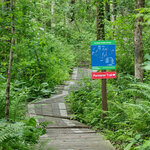
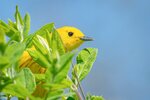
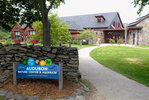
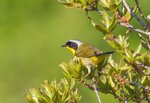


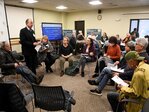
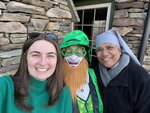









Comments
No comments on this item Please log in to comment by clicking here